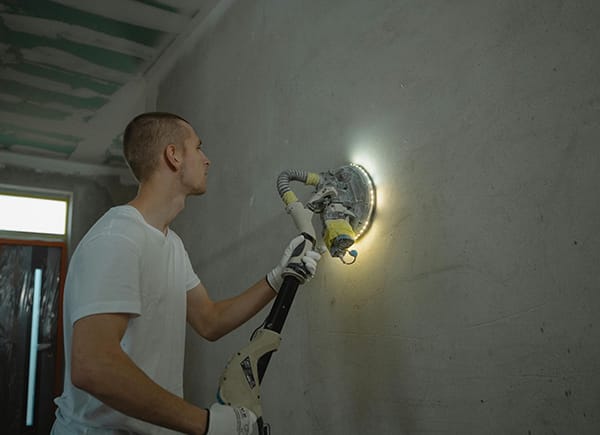- Free Estimates

A flawless paint job in Glastonbury properties can instantly elevate the look and feel of any room, but achieving that smooth, polished finish on walls and ceilings requires more than just a brush and a can of paint. From surface prep to clean-up, every detail matters. Many homeowners and property managers turn to professional wall and ceiling painters to avoid the frustration of uneven coats, drips, or mismatched textures.
Here are five expert tips for flawless wall and ceiling painting in Glastonbury properties.
Key Takeaways✔ Interior painting preparation is essential for smooth, lasting results on walls and ceilings. ✔ Quality tools and the right paint finish make a noticeable difference in every room. ✔ Following the correct painting order ensures even coverage and clean lines. ✔ Hiring professional wall and ceiling painters saves time and delivers expert-level precision. ✔ Touch-ups and cleanup complete the job and protect the finished look. ✔ Choosing paint colors based on light, layout, and function enhances a space’s appeal. ✔ Regular maintenance helps preserve painting walls and ceilings over time. |
A great painting starts long before the first coat goes on. Surface flaws, old paint, and dust can ruin even the best materials if the surface isn’t properly prepped. Interior painting preparation sets the foundation for a smooth, lasting finish when painting walls and ceilings.
The tools and materials used can make or break a painting project. A high-quality brush or roller may seem like a small detail, but it plays a big role in the final result. To achieve a smooth, durable finish when painting walls and ceilings, choosing the right gear matters just as much as the paint itself.
A well-executed painting project follows more than instinct—it follows a plan. Knowing the proper sequence and applying consistent strokes saves time and ensures a flawless finish. Whether it’s a DIY project or handled by professional wall and ceiling painters, having a process improves both speed and quality.
Some projects go beyond the reach of even the most determined homeowner. Tall ceilings, complex textures, or high-end finishes call for expert hands. That’s when searching for walls and ceilings painting near me in Glastonbury, CT, becomes crucial.
Once the final coat dries, the job isn’t over. A polished painting project includes careful inspection, detailed work, and proper cleanup. Skipping these final steps can undermine the impact of all that effort, especially in rooms where walls and ceilings are the main visual focus.
Clear the Space Safely: Remove tape slowly to avoid peeling fresh paint, and fold up drop cloths only once the room is dry. Interior painting preparation includes cleanup planning t

With interior painting costs ranging from $966 to $3,087—making smart design choices becomes even more important. One of the most impactful decisions is selecting the right paint color, as it influences mood, lighting, and the perceived size of a room. Thoughtful color selection when painting walls and ceilings helps create a polished, comfortable space that reflects the home’s unique character.
Rooms with lots of natural light can handle bolder or cooler tones without feeling closed in. North-facing rooms often benefit from warmer shades to balance out cooler lighting. When planning room painting and ceiling finishing, factoring in daylight helps create a balanced, inviting atmosphere.
A lighter ceiling color makes a room feel taller and more open, while darker tones can create a cozier, more intimate setting. Flat white is a common go-to, but slight tints can add subtle dimension. Professional wall and ceiling painters often recommend soft neutrals to maintain harmony without overwhelming the space.
Paint should work with the room’s permanent features like flooring, countertops, and cabinetry. Warm tones pair well with wood finishes, while cooler grays and blues suit modern tile or stainless steel. Painting walls and ceilings with the bigger design picture in mind creates a cohesive look.
Flat finishes work well on ceilings and low-traffic walls since they hide flaws and reflect less light. Satin and eggshell finishes are ideal for living spaces because they’re easier to clean and stand up to daily wear. This kind of interior painting preparation ensures the result lasts and performs well over time.
Paint chips often look different on the wall than they do in the store. Using small sample jars to test colors directly on the walls and ceilings gives a more accurate idea of the final result. It’s a simple step that can prevent costly mistakes during room painting and ceiling finishing.
Even with research, choosing color can feel overwhelming. Professional wall and ceiling painters can offer expert advice on undertones, finishes, and trending palettes that suit the space. Many local services listed under walls and ceilings painting near you in Glastonbury, CT, include consultations for exactly this reason.

Hiring the right painters can make all the difference between a smooth, professional finish and a frustrating experience. A trusted crew brings skill, organization, and respect for the property. When painting walls and ceilings in residential spaces, it pays to know what to look for before signing a contract. Much like when you hire a roofing company to protect your home from the elements, choosing a painting contractor requires checking references and verifying insurance to ensure your investment is fully protected.
A reputable contractor should carry liability insurance and be licensed to operate in the state. This protects the homeowner if there’s damage or an accident during the job. Whether it’s interior painting preparation or room painting and ceiling finishing, proper credentials show the painter is serious about doing things right.
Photos of past projects reveal the painter’s attention to detail, consistency, and style. Ask for a portfolio or browse online galleries showcasing walls and ceilings they’ve completed. Professional wall and ceiling painters are proud to share their results, especially if they’ve handled similar home styles or room layouts.
Online reviews offer insight into punctuality, communication, and quality of work. Focus on feedback that mentions how well painters protected furniture, cleaned up, or handled complex tasks like ceiling work. Search terms like walls and ceilings painting near me in Glastonbury, CT, often lead to local reviews that help narrow the list.
A clear explanation of how the painters handle prep, priming, painting, and touch-ups speaks volumes. Good contractors outline how they manage each stage, from covering floors to completing room painting and ceiling finishing with care. Vague or rushed answers may signal lack of experience or cutting corners.
A proper quote should break down labor, materials, and expected timeline. This helps prevent surprises and gives a chance to compare bids fairly. Quality professionals in painting walls and ceilings will walk clients through the details, ensuring full transparency before work begins.
The way a painter interacts—whether by phone, email, or in person—sets the tone for the entire job. Prompt replies, polite conduct, and a willingness to answer questions go a long way. Homeowners looking for interior painting preparation and lasting results should choose someone who treats the project with respect from day one.

Painting a ceiling typically adds $1 to $6 per square foot to the overall cost, depending on the ceiling type and the painter’s rates—making proper upkeep well worth it. Once the last coat dries and the painters pack up, the job isn’t truly finished. Fortunately, with the right maintenance habits, painted walls and ceilings can stay fresh for years.
Dust and smudges build up over time, especially in high-traffic areas or near ceiling vents. Use a microfiber cloth or a sponge with mild soap to gently wipe walls, avoiding abrasive cleaners that can dull the finish. This simple step keeps room painting and ceiling finishing looking bright and cared for.
Scuffs from furniture, fingerprints, or everyday wear are inevitable. Addressing them right away with a soft cloth or magic eraser prevents the marks from setting in. For deeper marks, professional wall and ceiling painters recommend keeping a small container of matching paint for quick touch-ups.
Bathrooms, kitchens, and laundry rooms are prone to humidity, which can cause paint to peel or bubble over time. Running exhaust fans and dehumidifiers helps prevent moisture from damaging painted surfaces. Interior painting preparation in these spaces often includes mold-resistant paint to add durability.
Even quality paint can show wear in busy hallways, entryways, or kids’ rooms. Schedule repainting every few years to keep the space looking polished and fresh. Many who search walls and ceilings painting near me in Glastonbury, CT, do so because these spots need consistent upkeep.
Sliding chairs, headboards, and door handles can all chip or dent paint. Adding bumpers, felt pads, or soft guards reduces contact and keeps walls in better shape. Preventing this kind of wear goes a long way in preserving painting walls and ceilings over the long term.
Ceilings often go unnoticed, but stains or cracks can be early signs of leaks or structural issues. Regularly scanning for discoloration helps catch problems before they worsen. Room painting and ceiling finishing last much longer when ceilings are monitored just like the walls.
Yes, walls and ceilings can be painted the same color, especially in rooms where a seamless look is desired. This approach can create a cozy, cocoon-like effect and works particularly well in small or modern spaces. Professional wall and ceiling painters often recommend using different finishes for depth—flat on ceilings and eggshell or satin on walls—to enhance the results when painting walls and ceilings.
Wait at least two weeks before cleaning newly painted surfaces to allow the paint to fully cure. Cleaning too soon can cause smearing, dullness, or even peeling, especially if the paint hasn’t bonded to the surface properly. After full curing, gentle cleaning helps maintain the look of quality room painting and ceiling finishing.
For minor chips or scuffs, use the same paint originally applied and lightly feather the edges with a small brush or sponge. Always stir the paint well before touching up to match the existing color and sheen. Homeowners often turn to professional wall and ceiling painters for perfect touch-ups in visible areas, especially after furniture moves or seasonal changes.
Textured ceilings require a different approach, often needing thicker rollers or spray application for even coverage. It’s also important to use more durable, high-build paint designed to grip uneven surfaces. Most experts in walls and ceilings painting near you in Glastonbury, CT, will recommend testing a small area first before tackling the entire ceiling.
Ceilings typically need repainting every 7–10 years, while walls may require attention every 3–5 years depending on traffic and wear. Smoke, humidity, and lighting can shorten a ceiling’s lifespan, especially in kitchens or bathrooms. When planning any updates, it’s smart to combine painting walls and ceilings for a consistent and refreshed appearance.
Bring new life to your living space with the trusted team at Glastonbury Professionals House Painters—experts in painting walls and ceilings with precision and care. Whether it’s a full interior refresh or detailed room painting and ceiling finishing, our crew delivers polished results that stand the test of time. With a strong focus on interior painting preparation and clean, consistent craftsmanship, every project is handled with attention to detail.
For homeowners searching for walls and ceilings painting near me in Glastonbury, CT, this is the team that gets it done right—contact us today!